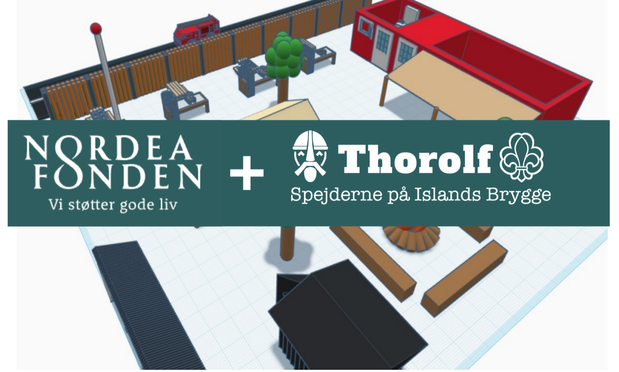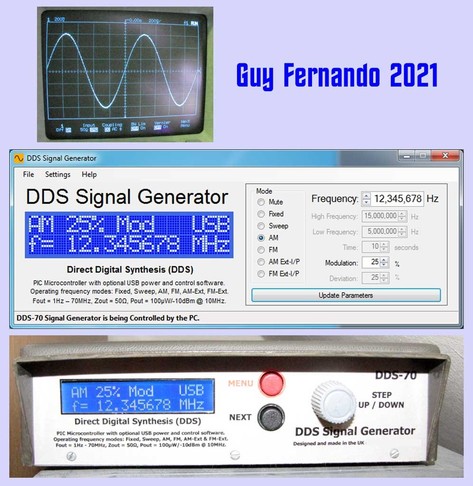Jeg er meget stolt af i dag at kunne fortælle om vores nye projekt "Ude på Brygge", hvor spejderne på Islandsbrygge nu med støtte fra #Nordea-fonden etablerer et helt nyt mødested for udendørs fællesskabsaktiviteter for alle. Læs mere på https://www.thorolf.dk/med-stoette-fra-nordea-fonden-etableres-nyt-udendoers-moedested-paa-bryggen #spejder #udeliv #thorolfspejderne #dds #islandsbrygge
#dds
ボークスの『葬送のフリーレン』ドール情報が公開!フリーレン(バージョン2.0)とフェルンが「ドルフィードリーム」に登場!
https://hobby.dengeki.com/news/2639197/
#hobby_dengeki #ドール #ボークス #volks #ドルフィードリーム #DDS #葬送のフリーレン #フリーレン #フェルン
Mastodon ou Alphabet Amazon ByteDance Meta Microsoft Xai ?
https://guersanguillaume.com/a-quel-gafam-ces-reseaux-sociaux-appartiennent-ils/ choisir l' #indépendance la #collaboration les #alliees hors #GAMAM #GAMAM , hors #géants de la #tech . @Mastodon #EscapeX @HelloQuitteX #GlobalSwitchDay #Fediverse @antipub_toulouse #BloqueLaPub @LaQuadrature @RAPasso Aberrations énergétiques et #environnementales aussi.. @Attac #sobriété #CyberRésiliience #Politique #Corruption @anticor #Veille #Inégalités #ISS #PrintempsBruyant #Guerres #Génocides #Massacres #Wikipedia #DonnéesDeSanté #DDS #Critique #boycott #Santé #ViePrivée @Reporterre @reporterswithoutorders #ReporterssansfrontièresRSF #désinformation #ignorance
🔘Cauți găzduire web? Descoperă toate pachetele noastre și bucură-te de cel mai mici prețuri din România.
✔️Aplică cuponul HELLO pentru 100% reducere prima lună.
🌐Accesează acum pagina noastră: https://dds.ro/
"The DDS had struggled in recent years to stay at full strength, buffeted by what employees said was political infighting, hiring freezes, travel restrictions and an increasing number of bureaucratic layers. A watchdog audit released in May 2024 also found that former DDS directors had granted unauthorized waivers for certain tech tools. But every employee interviewed said they wouldn’t have left if it wasn’t for DOGE.
One former senior Pentagon official, who asked not to be named because of possible retaliation, described DOGE’s wider incursion into the Defense Department as damaging and unproductive
“They’re not really using AI, they’re not really driving efficiency. What they’re doing is smashing everything,” the former official said.
At the DDS, “The best way to put it, I think, is either we die quickly or we die slowly,” Hay said."
https://www.politico.com/news/2025/04/15/pentagons-digital-resignations-00290930
Non au transfert des données de santé #DDS à #Microsoft voire à l'état #américain #darwinEU #Trump #Musk https://www.liberation.fr/idees-et-debats/tribunes/non-au-transfert-des-donnees-de-sante-de-10-millions-de-francais-dans-le-cloud-de-microsoft-20250403_HARQIHZNPBHNLNXJCOTYHCCC6A/
The fact that the #icc is only prosecuting #duterte for 47 murders should scare the #DDS camp.
What it means: they have irrefutable proof on those 47 murders.
What it also means: if the PH government were, by some means, to rescind its cooperation and bring him home, there would still be irrefutable evidence to try him in the #philippines .
As someone who knew multiple victims (at least half of whom had never touched drugs), I'm watching this closely.
Vores spejdergruppe har lavet en serie cool merch med subtile og sjove spejdervibes.
Perfekt gave ide til enhver spejder eller dig selv. Uanset hvor du er spejder https://intra.thorolf.dk/dds-merch/
Overskuddet går til vores store spejderes udlandsture #spejder #dds
Merch from our scout group. For all you outdoor lovers!
jugando con Arduino
Ленточные накопители в домашнем ПК
Приветствую всех! Однажды перед каждым из нас встаёт вопрос: где хранить сотни гигабайт столь важной информации? Кто-то продлевает подписку в облаке, кто-то покупает ещё один винт, кто-то собирает NAS, а кто-то, как и я, присматривается к чуть более экзотическим решениям. Вдохновившись постом двухгодичной давности про серверное железо в обычном ПК, я решил, что самое время рассказать про ещё один атрибут подобных систем — стримеры. Если в прошлый раз я рассказывал про древний аппарат, то в сегодняшней статье поговорим про более современные экземпляры, а главное — про использование таких девайсов в самых обычных компьютерах. Заодно разберёмся, стоит ли пытаться так делать, как заставить всё это работать, какой экземпляр лучше, а на какие не стоит даже смотреть.
https://habr.com/ru/companies/timeweb/articles/851498/
#timeweb_статьи #стример #магнитная_лента #scsi #sas #pcie #qic #dds #dlt #sat #lto #троллейбус_из_буханки_хлеба
ich check manchmal nicht wie leute diesen fiebertraum von gesellschaft ohne #depersonalisation und #derealisation verarbeiten :D
gerne tips geben
Verden jamboreen kommer igen til Danmark 😁 iih hvor jeg glæder mig. #spejder #dds
#kfum
https://spejderne.dk/2024/08/21/danmark-bliver-vaerter-for-verdensjamboreen-i-2031/
El ring olímpico de boxeo se convierte en un campo de batalla: género, equidad y una pelea de 46 segundos que desató la indignación mundial
https://terradealti.com/7i25
#París2024 #IgualdadDeGénero #DDS #BoxeoOlímpico
#ImaneKhelif #AtletasTransgénero #JuegosOlímpicos2024
#AngelaCarini #LinYuTing #COI #AIBA #GéneroYDeporte
ROS 2のDockerコンテナ間でpub/subするとき、docker runでどのオプションを付ければいいの?
https://qiita.com/dandelion1124/items/9c0a9c16956bb8fb9065?utm_campaign=popular_items&utm_medium=feed&utm_source=popular_items
For a while I’ve wondered if it was possible to find something that could be used to learn about the basics of analog synthesis. This is the first part of a series of posts looking at the possibilities.
- Part 1 – This introduction and high-level design principles.
- Part 2 – Detailed design of an ESP32 based PCB.
- Part 3 – Software design.
- Part 4 – Mechanical assembly and final use – todo.
Warning! I strongly recommend using old or second hand equipment for your experiments. I am not responsible for any damage to expensive instruments! Please note that I am not an electronics person – I’m only dabbling.
Introduction
There are several educational synths on the market – just searching for “educational synthesizer” brings up many such hits, such as the Tangible Waves Synth Explorers or Erica Synth’s Bullfrog. And whilst these aren’t ridiculously priced when you consider the build quality and functionality, they are not really the kind of thing I had in mind.
Another great looking one is the mki x es.EDU DIY synth kit which is a collaboration between Mortiz Klein and Erica Synths. This is particularly interesting because it comes with very comprehensive teaching guides for each module to be built, walking through the electronics principles and design process behind each module, which is great if you want to learn about synthesis at the same time as learning about electronics.
There are also some interesting takes on the “synthesis as lego block” idea – Korg’s Little Bits springs to mind here, but I don’t think they are available anymore. But many devices in this category start to look a little like a toy even if quite fully featured (e.g. Blipblox) if not careful.
There are some interesting “all in one modular in a box” type devices too – I quite like the look of the Korg Volca modular for this. Others that might fit here too might be some of the Bastl Instruments devices (such as the Kastle), or any one of a number of semi-modular devices, but the prices are going up (these are quality instruments in their own right) and so is their complexity in moving away from the “basics”.
There are also some excellent looking online tools too (Ableton’s “Learning Synths” is excellent), but I wanted something tangible and tactile. Something more akin to the old spring-based electronics kits you used to be able to buy.
The closest thing I’ve found is perhaps MiniMo – the “mini modular synth” project, and whilst I like the idea of a single hardware platform that can be reconfigured via software into different modules, it does make for a rather clumsy user interface.
Another angle is the “DIY solder kit” synth like the Atari Punk Console or similar, but they are more for learning to solder not learning about synths.
So this has got me wondering what it would take to produce something that could support the absolute basics of an analog synth in a cheap (so 100x100mm) PCB with through-hole components that would be suitable to linking up to a solderless breadboard for further experiments.
This is the start of my “thinking out loud” in this space seeing as this is one of those wheels I’ve yet to have a go at reinventing.
Basic Idea and High-level Requirements
Fundamentally I’d like to have something that allows the tactile experience of plugging in cables and twiddling knobs for learning about signals and sounds in a very “immediate feedback” kind of way.
It also has to be cheap and relatively easy to get hold of and DIY build. This is more important than quality of output I feel. It also means it won’t be an issue if something gets fried whilst experimenting – just build a new one.
Ideally there would be enough self-contained functionality that it won’t need to be plugged into anything else. Which might mean it could have simplified protection on external electronic connections – which, let’s face it, would otherwise be pretty critical if used for educational purposes and meant to be connected to other equipment!
To me this all implies some kind of pseudo-analog synth – the user interface presents like a simple, standard analog synth, but the internals don’t have to be analog at all. And considering how much I know of electronics myself, a microcontroller with some basic circuitry is the obvious choice for the insides…
Whilst not meant to be connected to anything else, it would be useful to be able to measure the individual signals with a scope, so this means “proper” wired links between modules – it can’t be a “logical” connection – it has to be a real one ideally with real measurable voltages.
Design Requirements
So, chewing over the above, this is leading me to ponder some kind of microcontroller-based system with real physical jumper wires – so something like the MiniMo is a good model, but ideally it could be USB powered – I don’t want to be stuck with just batteries, although a single 9V might be useful option to have.
I’d want it to look more modular synth-like than the MiniMo, but having said that I think it would be fine to have all that within a single panel if its fits. I’m now wondering how much I could get into a 100x100mm sized front panel which means the panels could be made cheaply by PCB manufacturers as well as the PCB itself. The main limitation I think, will be size of potentiometers. Assuming I’m using Dupont-style jumper wires to join the bits together, then I won’t need much space for jacks.
It would be great to squeeze everything on a single 100×100 PCB too rather than have the hardware “user interface” on a stacked board, as you often see in modular designs. Working on the basis that this could go in a box (wood, 3d printed, laser cut, etc) then external connectors – power, MIDI IN (maybe), audio output, don’t have to be part of the front panel.
Ideally I’d like enough space to support the following as a minimum:
- Dual voltage-controlled oscillators to allow for basic FM synthesis or modulation.
- Ideally the oscillators would produce several waveforms.
- Low-frequency oscillator, again possibly with a couple of waveforms.
- An envelope generator – ideally ADSR if there is room for that many pots!
- Single voltage-controlled amplifier.
- Some kind of filter. Possibly voltage controlled too, but manually controlled at least.
It would be good if each module supported either pot or CV control.
Things I’m not planning to support:
- Polyphony!
- Keyboard.
- Noise and effects.
- Complex mixing.
- Default internal patching – if there are no wires, there will be no sound!
I’m thinking it would be a basic, single-voice chain, triggered externally (CV/gate or MIDI or both) and a single mono audio output. Being able to drive it over USB MIDI would be a bonus but not essential I think.
At some point it might be nice to be able to produce a second module to expand the capabilities – e.g. alternative modulation possibilities, additional channels, effects, noise generator, filters, mixer, etc.
Basic Design Principles
As already mentioned, given my lack of expertise in proper electronics, the easiest way forward for me is to use a microcontroller with some support analog circuitry, so here is my list of design principles so far:
- Microcontroller based.
- All jumper inter-module links are at the microcontroller’s basic logic level – so that would limit it to 5V or 3V.
- All jumper inter-module links would be real 0 to VCC signals. This means the microcontroller would need good analog input and output facilities.
- System could be USB powered, but an external 9V (battery or DC) should be an option.
- External connections include: serial MIDI (optional), USB MIDI (possibly), audio line output, speaker (possibly).
- There will be some higher quality (i.e. requiring higher sampling rates) analog signals for audio, and lower quality (i.e. lower sampling rates) signals for control lines. There will be some digital gate or trigger signals required too, working at the MCU logic level.
The MiniMo uses an ATtiny85 for each module, so I have wondered about taking a similar approach – a single, small microcontroller per module. But there are so many other more powerful possibilities that I think a single microcontroller acting as a range of independent modules would be more useful and cost effective.
Taking a cue from my Selecting Microcontrollers for Music page it is worth noting any boards that support a DAC or I2S, both very useful for audio applications. The number of ADCs is relevant too.
Other hardware options might consider the use of:
- Analog multiplexers, such as the MCP3008, CD4051, CD4067, etc.
- SPI DACs such as the MCP48[012][12] range (8,10,12-bit DAC; single or dual format).
- Digital potentiometers, such as the X9Cxxx or MCP41x2.
Following on from my series of ESP32 experiments, I’ve been really impressed with the capabilities of the original ESP32 module, so I’ve decided to use that as the basis for my board. I’m going with the original as I think the option for two DACs onboard could be really useful.
I did consider a Raspberry Pi Pico, but decided the lack of ADCs and DACs meant I was already “running uphill” just to get started. It is dual core, but so is the ESP32 and multi-tasking appears directly available from the Arduino IDE. The ESP32 also has a floating point unit which might come in handy too. Another alternative might be a more modern Arduino, but I’m going with the ESP32 for now.
I’m not after a software-defined synthesizer – all the routing and signal processing will effectively be done via hardware patching – so any actual modules of code are likely to be pretty straight forward. For this reason, I’m not planning on using any of the audio frameworks I’ve mentioned before beyond basic library support. I’m just aiming for some basic direct digital synthesis on the ESP32.
Closing Thoughts
That is the essential concept sketched out. In the follow-up parts of the series of posts, I’ll get into the detail of what I’ve actually done.
Watch this space.
Kevin
https://diyelectromusic.wordpress.com/2024/05/07/educational-diy-synth-thing/
Checking that my Direct Digital Synthesizer (DDS) still works when controlled by its PC app.
#Electronics #DDS #HamRadio #AmateurRadio
[24/01/2021]






